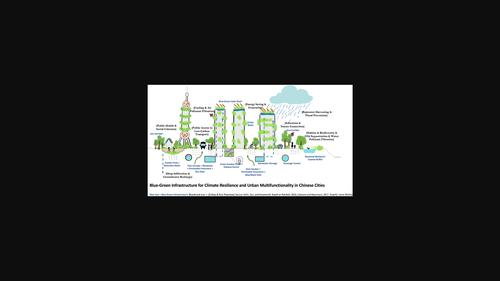Blue‐green infrastructure for climate resilience and urban multifunctionality in Chinese cities
IF 5.4
3区 工程技术
Q2 ENERGY & FUELS
引用次数: 5
Abstract
Climate disruption and rapid urbanization present numerous challenges to infrastructure and communities in Chinese cities, from flooding and coastal erosion, to drought and pollution. This review article focuses on the utilization of Blue‐Green Infrastructure (BGI)—a suite of nature‐based strategies combining hydrological functions (blue) with vegetated landscaping (green)—to provide climate resilience and urban multifunctionality in China's large, high‐density cities. Chinese cities are utilizing BGI in new construction, in neighborhood retrofits, and in revival of ancient nature‐based infrastructure. The literature gives most attention to BGI in China's Sponge City Initiative that addresses the pluvial flooding crisis. Quantitative monitoring of BGI shows progress in stormwater‐related functions and to a lesser extent with rainwater utilization to address water scarcity. Other studies document multifunctional aspects of BGI, including cooling and energy‐saving functions of urban trees and green roofs, and green space expansion with parks that serve as retention basins. However, significant challenges and potential remain. China's urban infrastructure, including BGI, needs stronger design to be robust under extreme conditions as climate disruption intensifies. There is potential for BGI to more fully address habitat fragmentation, extreme heat, sea‐level rise and other climate and urbanization hazards. Further research and pilot projects are needed to characterize and quantify the benefits of multifunctional BGI. More integrated planning across city sectors, with greater incorporation of ecological and social functions, will help Chinese cities achieve multiple goals: providing carbon‐neutral and climate‐resilient infrastructure, improving air and water quality, regenerating ecosystems, and enhancing urban quality of life.

中国城市气候适应能力和城市多功能的蓝绿色基础设施
气候破坏和快速城市化给中国城市的基础设施和社区带来了许多挑战,从洪水和海岸侵蚀到干旱和污染。这篇综述文章的重点是利用蓝绿基础设施(BGI),这是一套基于自然的战略,将水文功能(蓝色)与植被景观(绿色)相结合,为中国的大、高密度城市提供气候适应性和城市多功能性。中国城市正在利用华大基因进行新的建设、社区改造和古老的自然基础设施的复兴。文献中最受关注的是华大基因在中国的海绵城市倡议中,该倡议旨在解决洪水危机。BGI的定量监测显示,在雨水相关功能方面取得了进展,在较小程度上,雨水利用解决了缺水问题。其他研究记录了华大基因的多功能方面,包括城市树木和绿色屋顶的冷却和节能功能,以及利用公园作为保留池的绿地扩展。然而,仍然存在重大挑战和潜力。随着气候破坏的加剧,包括华大基因在内的中国城市基础设施需要更强的设计,才能在极端条件下保持稳健。华大基因有可能更充分地解决栖息地破碎化、极端高温、海平面上升和其他气候和城市化危害。需要进一步的研究和试点项目来表征和量化多功能华大基因的益处。城市各部门更为一体化的规划,更大程度地融合生态和社会功能,将有助于中国城市实现多个目标:提供碳中和和气候适应性强的基础设施,改善空气和水质,再生生态系统,提高城市生活质量。
本文章由计算机程序翻译,如有差异,请以英文原文为准。
求助全文
约1分钟内获得全文
求助全文
来源期刊

Wiley Interdisciplinary Reviews-Energy and Environment
ENERGY & FUELS-
CiteScore
11.70
自引率
3.30%
发文量
42
期刊介绍:
Wiley Interdisciplinary Reviews: Energy and Environmentis a new type of review journal covering all aspects of energy technology, security and environmental impact.
Energy is one of the most critical resources for the welfare and prosperity of society. It also causes adverse environmental and societal effects, notably climate change which is the severest global problem in the modern age. Finding satisfactory solutions to the challenges ahead will need a linking of energy technology innovations, security, energy poverty, and environmental and climate impacts. The broad scope of energy issues demands collaboration between different disciplines of science and technology, and strong interaction between engineering, physical and life scientists, economists, sociologists and policy-makers.
 求助内容:
求助内容: 应助结果提醒方式:
应助结果提醒方式:


